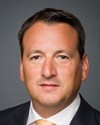In short, Mr. Chair, the way I see this, certainly in my current capacity, is that it's not an either/or proposition. I think the main estimates and the policy platform from which they derive—from the observations that I've had both in the private sector and now in a political capacity—have created opportunities for communities, in particular for first nation communities, to be involved in all aspects of resource development.
This has played a critical role for things like the Ring of Fire, where we see small, very isolated first nation communities participating in the environmental assessment process. Their participation in things like traditional land use planning, customary practices, and the like are essential parts of the environmental assessment process designed to be protected and respected when and if extraction activities actually occur.
That's the way I see the policy evolving, and actually working, God help us all.

